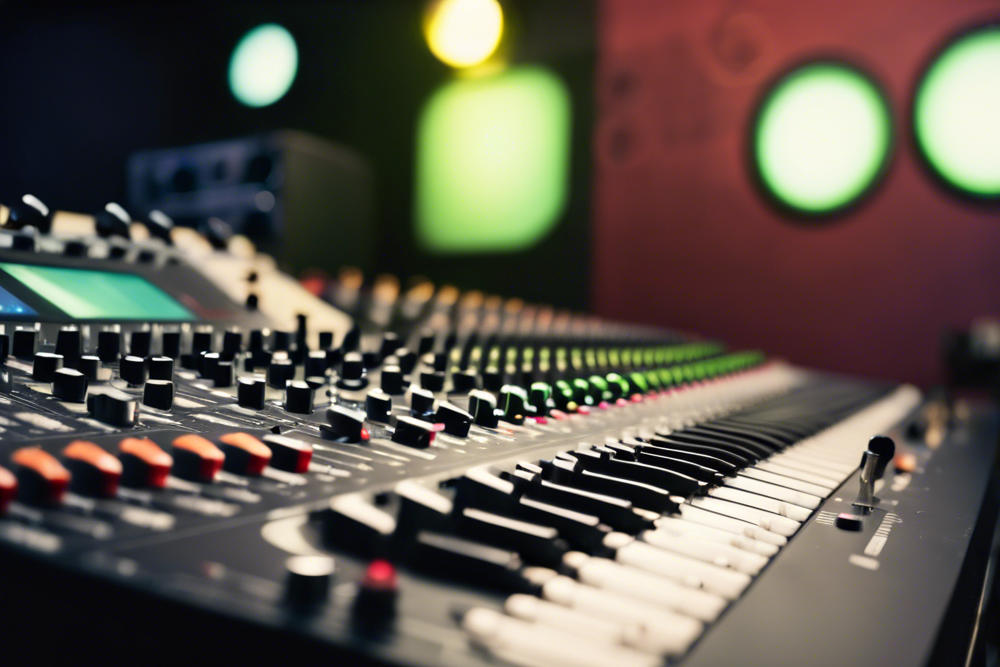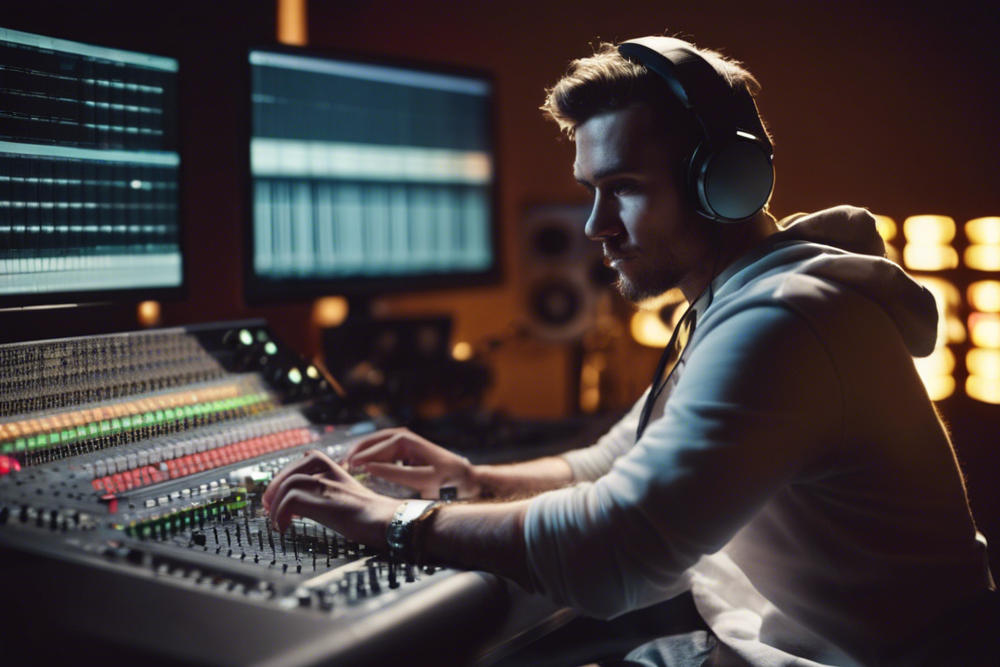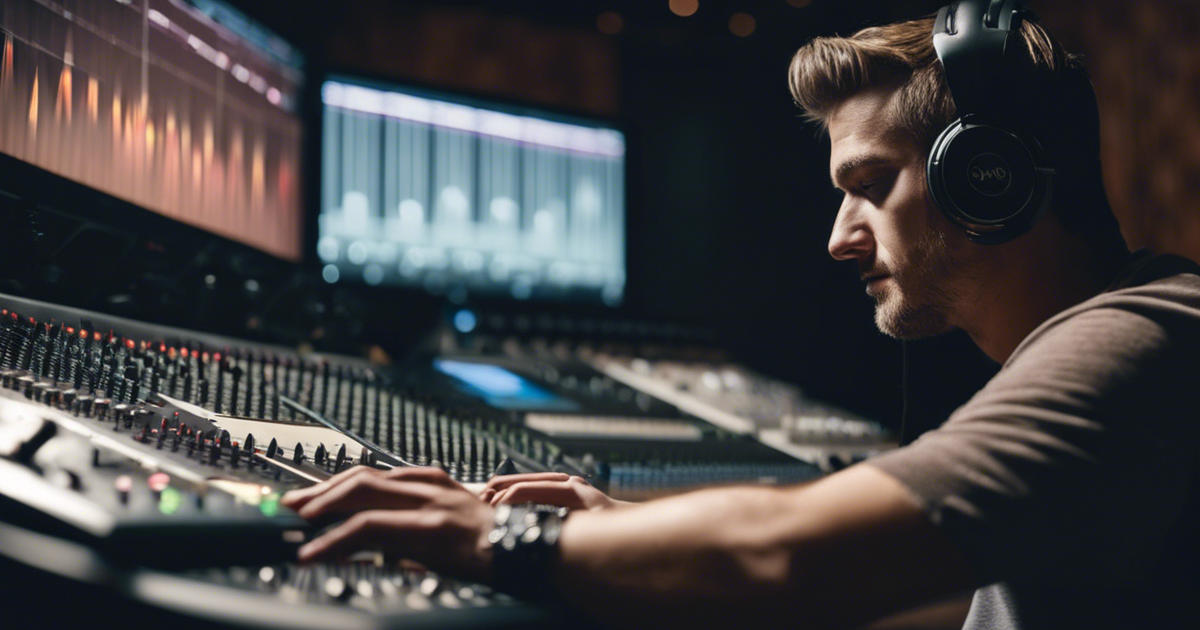Estimated reading time: 7 minutes
Introduction: The Art of Polishing Sound
As a music producer, you’ve likely heard the term “mastering” thrown around countless times. But what exactly is mastering, and why is it such a crucial step in the music production process? In this comprehensive guide, we’ll dive deep into the world of mastering, exploring its importance, techniques, and how it can elevate your tracks to professional-level sound quality.
Table of contents
- Introduction: The Art of Polishing Sound
- What is Mastering?
- The Mastering Process: A Step-by-Step Breakdown
- Further Learning and Resources
- The Importance of Mastering in Music Production
- Common Misconceptions About Mastering
- The Role of the Mastering Engineer
- DIY Mastering vs. Professional Mastering
- Tools and Techniques in Modern Mastering
- Preparing Your Mix for Mastering
- The Future of Mastering
- Video: What is Mastering? Why Master Your Tracks Before Release
- Conclusion: The Vital Role of Mastering in Music Production
- FAQs
What is Mastering?
Mastering is the final stage in the audio production process, occurring after mixing and before the release of a track or album. It’s the art of preparing and transferring recorded audio from a source containing the final mix to a data storage device, the “master,” from which all copies will be produced.
But mastering is more than just a technical process. It’s a critical step that can make or break the overall sound quality of your music. Let’s break down the key aspects of mastering to better understand its significance.
The Goals of Mastering
- Enhance the overall sound quality
- Create consistency across an album
- Prepare the audio for various playback systems
- Ensure the track meets industry standards
The Mastering Process: A Step-by-Step Breakdown
1. Analyzing the Mix
The first step in mastering is to critically listen to the mixed track. This involves:
- Identifying any issues with frequency balance
- Checking the stereo image
- Assessing the dynamic range
- Looking for any phase issues
“Mastering begins with listening. Understanding the mix is crucial to making informed decisions during the mastering process.” – Grammy-winning engineer
2. Equalization (EQ)
EQ is used to balance the frequency spectrum of a track. This might involve:
- Boosting or cutting specific frequency bands
- Addressing any resonant frequencies
- Ensuring the low end is tight and controlled
- Bringing out clarity in the high end
3. Compression and Limiting
Dynamic range compression helps to control the overall level of the track and can add punch and consistency. This step includes:
- Using a compressor to even out volume levels
- Applying limiting to increase the overall loudness without introducing distortion
- Balancing the dynamic range to suit the genre and intended playback systems
4. Stereo Enhancement
This step involves working on the stereo image of the track to create width and depth. Techniques might include:
- Mid-side processing
- Stereo widening
- Using the Haas Effect for a sense of space
5. Loudness Normalization
Ensuring your track meets current loudness standards for various streaming platforms is crucial. This involves:
- Adjusting the overall level of the track
- Meeting specific LUFS (Loudness Units Full Scale) targets
- Balancing perceived loudness with dynamic range
6. Dithering and Noise Shaping
When reducing bit depth (e.g., from 24-bit to 16-bit for CD), dithering helps minimize quantization noise. Noise shaping can further reduce audible artifacts.

Further Learning and Resources
Ready to dive deeper into mastering? Check out these mixing and mastering courses to hone your skills. For those using Ableton Live, you can learn how to mix in Ableton Live with a comprehensive guide that covers everything from EQ to compression.
Want to master your tracks like a pro? Bassgorilla’s detailed article, mastering in Ableton, breaks down the process into nine simple steps. It’s packed with practical tips to help you achieve a polished, professional sound. Dive in and start mastering your music today!
The Importance of Mastering in Music Production
Achieving Consistency Across an Album
One of the primary goals of mastering is to create a cohesive listening experience across an entire album. This means:
- Balancing levels between tracks
- Ensuring a consistent tonal quality
- Managing the space between tracks
Optimizing for Different Playback Systems
A well-mastered track should sound good on a wide variety of systems, from high-end sound systems to laptop speakers. Mastering engineers consider:
- Frequency response of different systems
- Dynamic range limitations
- Potential playback environments
Meeting Industry Standards
Mastering ensures your tracks meet technical specifications for various release formats and platforms. This includes:
- Adhering to loudness standards for streaming services like Spotify and Apple Music
- Preparing appropriate file formats (e.g., WAV, MP3)
- Ensuring proper sample rates and bit depths
Common Misconceptions About Mastering
Myth 1: Mastering Can Fix a Bad Mix
While mastering can enhance a good mix, it’s not a magic solution for poorly mixed tracks. The old adage “garbage in, garbage out” applies here. A solid mix is crucial for achieving a great master.
Myth 2: Louder is Always Better
The “loudness war” has led many to believe that louder tracks are inherently better. However, over-compression can lead to listener fatigue and a loss of dynamic range. Modern mastering aims for a balance between loudness and dynamics.
Myth 3: Mastering is Just About Technical Adjustments
While technical knowledge is crucial, mastering is also an art form. It requires a keen ear, creative decision-making, and an understanding of musical context.

The Role of the Mastering Engineer
A professional mastering engineer brings several key elements to the table:
- Fresh ears and objectivity
- Specialized equipment and listening environment
- Experience across various genres and styles
- Understanding of current industry standards and trends
“A good mastering engineer is part technician, part musician, and part psychologist – understanding not just the technical aspects, but the artist’s vision and the emotional impact of the music.” – Veteran mastering engineer
DIY Mastering vs. Professional Mastering
As a music producer, you might be tempted to master your own tracks. While this can be a valuable learning experience, there are pros and cons to consider:
Pros of DIY Mastering:
- Cost-effective
- Immediate control over the process
- Opportunity to learn and improve your skills
Cons of DIY Mastering:
- Lack of specialized equipment
- Potential for bias or “ear fatigue”
- Limited experience compared to professionals
Tools and Techniques in Modern Mastering
Digital Audio Workstations (DAWs)
Many mastering engineers use specialized DAWs or plugins designed for mastering, such as:
Hardware vs. Software
While software solutions have become incredibly powerful, many mastering engineers still incorporate hardware units for their unique characteristics:
- Hardware EQs for their color and character
- Analog compressors for their warmth and nonlinear behavior
- Analog-to-Digital converters for high-quality conversion
Advanced Techniques
Modern mastering often involves sophisticated techniques like:
- Multi-band compression
- Dynamic EQ
- Spectral processing
- Mid-side processing
Preparing Your Mix for Mastering
To get the best results from mastering, whether DIY or professional, consider these tips when preparing your mix:
- Leave headroom: Aim for peaks around -6 dB
- Avoid over-compression on the master bus
- Be cautious with limiting
- Provide high-quality files (at least 24-bit/44.1kHz)
- Include reference tracks for comparison
The Future of Mastering
As technology evolves, so does the field of mastering. Some emerging trends include:
- AI-assisted mastering tools
- Immersive audio mastering for formats like Dolby Atmos
- Adaptive mastering for personalized listening experiences
Video: What is Mastering? Why Master Your Tracks Before Release
Conclusion: The Vital Role of Mastering in Music Production
Mastering is far more than a final polish on a track. It’s a crucial step that bridges the gap between the studio and the listener, ensuring your music translates well across all playback systems and stands up to commercial releases.
Whether you choose to dive into mastering yourself or work with a professional, understanding the process will help you make informed decisions about your music. Remember, a great master starts with a great mix, so focus on crafting the best possible tracks from the ground up.
As you continue your journey in music production, don’t underestimate the power of mastering. It’s the final touch that can elevate your tracks from good to great, ensuring your music makes the impact you’ve always dreamed of.
Related Posts
- Mastering in Ableton: Elevate Your Music to Professional Quality
- What is a MIDI File? Unraveling the Mystery
- What is a Masterclass? The Ultimate Online Learning Experience for Music Producers
- What is a Sample in Music? Demystifying Music Sampling
- What is a VST and How Does it Work? Understanding the Basics
- Learn Music Production: A Comprehensive Guide for Aspiring Producers
FAQs
Mastering ensures your music sounds cohesive and professional across various playback systems. It enhances sound quality, balances the track’s frequency and dynamic range, and meets industry standards for streaming and physical formats.
No, mastering cannot fix a poorly mixed track. While it can enhance a good mix, the saying “garbage in, garbage out” applies. A solid mix is essential for achieving a great master.
Key techniques include equalization (EQ) to balance frequencies, compression to control dynamic range, stereo enhancement for width and depth, loudness normalization to meet streaming standards, and dithering to minimize quantization noise when reducing bit depth.
DIY mastering can be cost-effective and educational, but professional mastering offers specialized equipment, fresh ears, and extensive experience. Professionals bring objectivity and industry knowledge that can significantly enhance the final product.
Ensure your mix has peaks around -6 dB, avoid over-compression on the master bus, and provide high-quality files (at least 24-bit/44.1kHz). Leave sufficient headroom and include reference tracks for comparison to get the best results from mastering.
